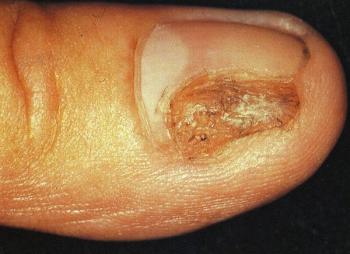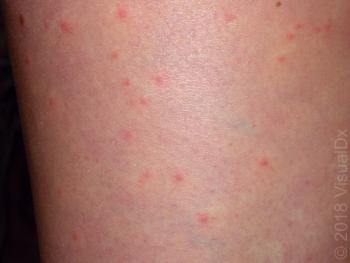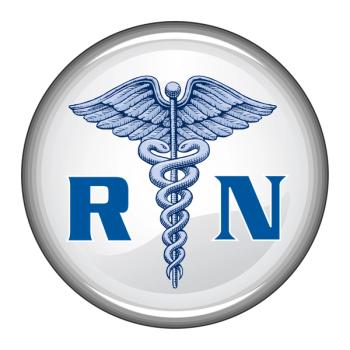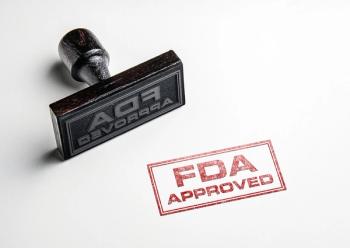
News
All News


Helping a dermatopathologist diagnose neoplasms and infections of the foot requires not only taking adequate samples, but in many cases, sending clinical photographs with them.

One hurdle in treating patients, particularly children and teens, is ensuring compliance with treatment protocols. It can feel like an uphill battle, but there are things you can do to improve your patients’ adherence level.

A JAMA Dermatology study shows that adherence to a Mediterranean diet high in anti-inflammatory nutrients may lessen psoriasis severity.

While claims don’t always lead to court cases, they can lead to stress, says Stephen E. Wolverton, M.D., a dermatologist with Indiana University Health in Bloomington, Ind. Learn more about managing the stress associated with malpractice claims.

False eyelashes and hair extensions could become a problem if it becomes representative of the “ideal” woman.

Introducing a new column called "Innovation" from the co-founders of Advancing Innovation in Dermatology Accelerator Fund. In the first installment of this series, Drs. Steve Xu and William Ju address the importance of innovation in dermatology.

A 52-year-old man presents with a severe headache and widespread rash after a camping trip. What's your diagnosis?

When it comes to successfully diagnosing melanonychia ― a brown or black pigmentation of the nail unit – it is important to examine the nails, look for pigmented lesions, be suspicious of nail melanoma, and biopsy early rather than late.

Survey offers insights on the future of healthcare costs - and your role as providers

This month we feature new products from MiraDry, Qosmedix, Rekze and Syneron Candela for conditions ranging from underarm sweating to rosacea and cellulite.

For many dermatologists, successfully treating patients means taking a more patient-centered approach to care. This table includes 11 tips from Dr. Neil Prose, Duke University Medical Center.


The Food and Drug Administration is in the process of evaluating scientific data on the safety of probiotics and postbiotics in cosmetics, said Linda Katz, M.D., director of the Office of Cosmetics and Color for the FDA.

For many dermatologists, successfully treating patients means taking a more patient-centered approach to care. This table includes 11 tips from Dr. Neil Prose, Duke University Medical Center.

While patient-centered medicine works well for patients, what does it mean for the practice?


In June, Dermira Inc. announced the FDA approval of Qbrexza (glycopyrronium) for primary axillary hyperhidrosis ― excessive underarm sweating.

Combination that extends survival in BRAF-mutant metastatic melanoma gains FDA approval.

Frontal fibrosing alopecia is a condition that is increasing in epidemic proportions, says Jerry Shapiro, M.D., in a presentation given at the 2018 AAD Summer Meeting.

When conducting skin treatments, addressing pain ― whether minor or more serious ― may make an uncomfortable procedure more tolerable for patients. Dr. Peter Lio outlines some steps physicians can follow to make patients more comfortable.

There are many reasons why patients resist following instructions, but a comprehensive approach can help doctors change behavior.

Nutritional supplements should only be considered for a small subset of patients with alopecia areata, said Dr. Leslie Castelo-Soccio in a presentation from the AAD Summer Meeting.

Diet can greatly affect patients’ skin conditions - and you can guide them in the right direction, says Dr. Rajani Katta in a presentation from the AAD Summer Meeting.

Caring for gay men and other men who have sex with men in a dermatology settings requires medical knowledge and cultural sensitivity, but few dermatologists have had formal training in caring for this group of patients.

Patients are being victimized by the high cost of drug therapy. "We can help them by prescribing less expensive drugs and by guiding them to the least expensive places to purchase them," says Dr. Norman Levine.

Reproductive age women with psoriasis could benefit from an endocrinologist or obstetrician referral before starting systemic therapy.

Gestational diabetes, gestational hypertension and pre-eclampsia are higher in women with psoriasis or psoriatic arthritis.

The July issue of Dermatology Times highlights some newly approved treatments in dermatology including a new wrinkle filler and new treatment for seborrheic keratosis.

From the July issue of Dermatology Times, new products for dermatologists and patients.